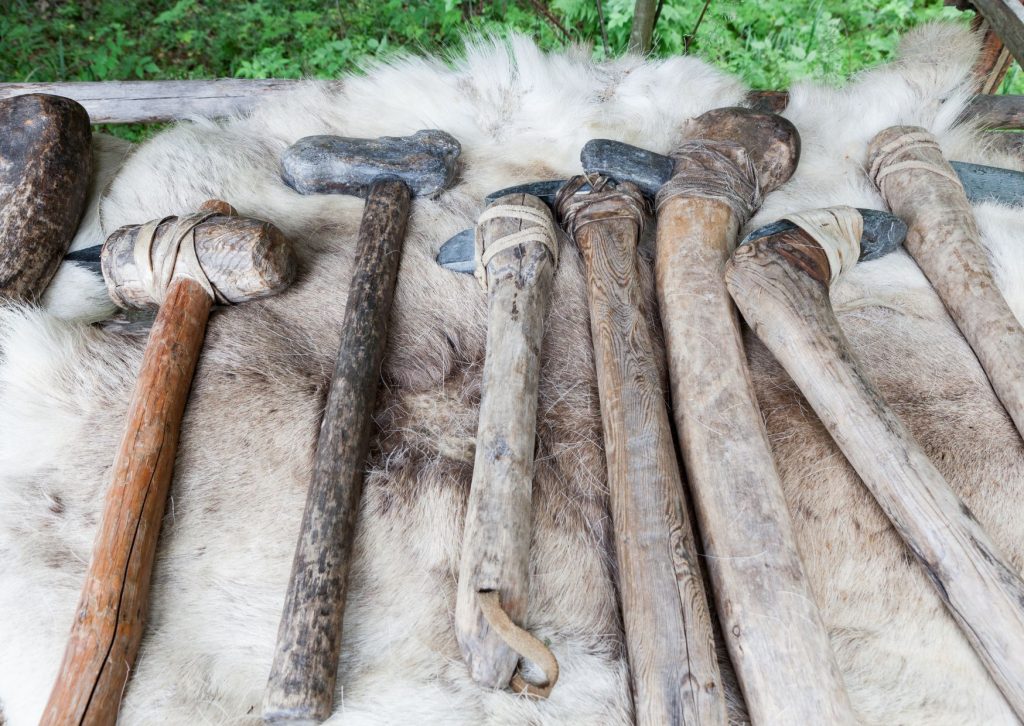The Iron Age (500 BCE – 1300 CE) in Finland was a transformative period, marking the emergence of organized communities, trade networks, and distinct cultural identities. This era laid the groundwork for what would become Finland’s unique place in Northern Europe, with influences from both the East and the West. For those preparing for the Finnish citizenship test, understanding Finland’s Iron Age provides insight into the origins of Finnish society and cultural identity.
The Early Iron Age (500 BCE – 0 CE): A Time of Transition
Finland’s transition from the Bronze Age to the Iron Age saw the introduction of iron tools, which were more durable and efficient than previous tools made from bronze or stone. Iron, sourced from bog iron deposits, was essential for crafting weapons, agricultural tools, and household items. However, the process of iron smelting and forging was complex, requiring specialized skills that were likely shared among a few craftsmen within communities.
Settlements during this period remained small and scattered, mainly along Finland’s southwestern coast and in river valleys where agriculture could thrive. Archaeological finds suggest that early Iron Age communities were primarily self-sufficient, with a mix of farming, hunting, and fishing sustaining their needs. Despite the relatively isolated nature of these communities, trade links gradually began to form, driven by the demand for exotic goods and metals.
The Role of Trade and Cultural Exchange
By the Middle Iron Age (0 CE – 800 CE), Finland had established active trade routes with neighboring regions. Artifacts such as Roman coins, jewelry, and luxury goods from the Baltic region and Scandinavia indicate that Finnish tribes participated in a growing network of long-distance trade. Key trade goods included furs, which were highly prized in European markets, as well as forest products like honey and tar. In exchange, Finland imported items like bronze jewelry, glass beads, and iron tools.
Trade fostered cultural exchange, introducing new technologies, beliefs, and customs to Finland. Contacts with the Baltic and Scandinavian regions influenced Finnish craftsmanship and burial practices, as evidenced by artifacts found in burial sites. Early Finnish burial traditions began to incorporate elements from neighboring cultures, with some graves containing imported items or displaying burial practices that mirrored those found in Sweden or Estonia.
The Late Iron Age (800 CE – 1300 CE): Formation of Proto-Finnish Culture
During the Late Iron Age, Finland’s cultural identity began to take shape, with increased social organization and settlement expansion. The Late Iron Age coincides with the Viking Age, and while Finland did not have Viking settlements, it was indirectly influenced by Norse culture and trade. Finnish tribes interacted with Norse traders and raiders, and coastal settlements were occasionally exposed to Norse expeditions.
Finnish communities developed their own social hierarchies, with chiefs and warriors gaining status within tribes. This period also saw the construction of fortified villages and hillforts, which provided protection against potential threats and served as centers of power and trade. Archaeological sites like the hillfort at Rapola, located in present-day Valkeakoski, highlight the organized nature of some Iron Age communities.
Religious practices and beliefs during this time were deeply connected to nature and shamanistic rituals. Finnish mythology and folklore, as later recorded in the Kalevala, contain echoes of Iron Age beliefs, including reverence for spirits, animal deities, and nature itself. Ritual sites and burial practices from the Late Iron Age reflect a culture that honored its dead through complex burial rites and ceremonies.
Technological and Artistic Developments
The Iron Age saw significant advancements in Finnish craftsmanship, particularly in metalworking and pottery. Finnish artisans created intricate bronze jewelry, including brooches, pendants, and rings, some of which featured designs inspired by both Scandinavian and Slavic styles. This blend of influences gave rise to a unique aesthetic that would carry on into later centuries.
Pottery from this period also displays increased sophistication, with decorative patterns and styles that varied by region. These artifacts reveal much about Iron Age daily life and social structure, as they were often used in ceremonial contexts or as grave goods.
The Legacy of Finland’s Iron Age
The Iron Age laid the foundations for Finnish society as we know it today, introducing early forms of trade, social organization, and cultural expression that would shape Finland’s development in the centuries that followed. While Finland’s Iron Age communities remained relatively isolated compared to their Scandinavian counterparts, their gradual engagement in regional trade and cultural exchange helped form a distinct Finnish identity.
For those studying for the Finnish citizenship test, understanding the Iron Age provides valuable context on Finland’s historical roots, showing how early Finns adapted to their environment, interacted with neighboring cultures, and developed unique traditions. The resilience and adaptability of Finland’s Iron Age communities reflect qualities that continue to define Finnish society.


